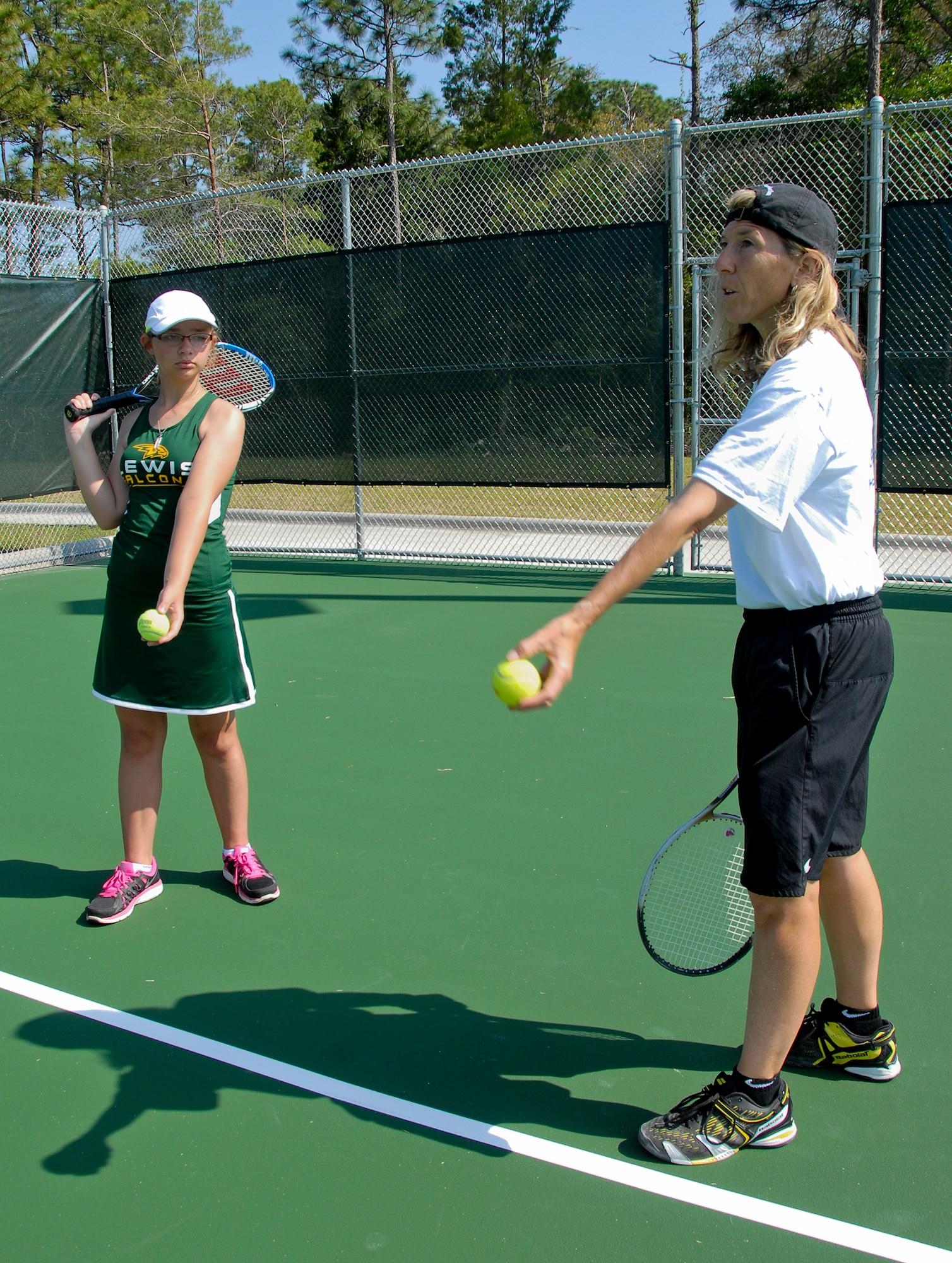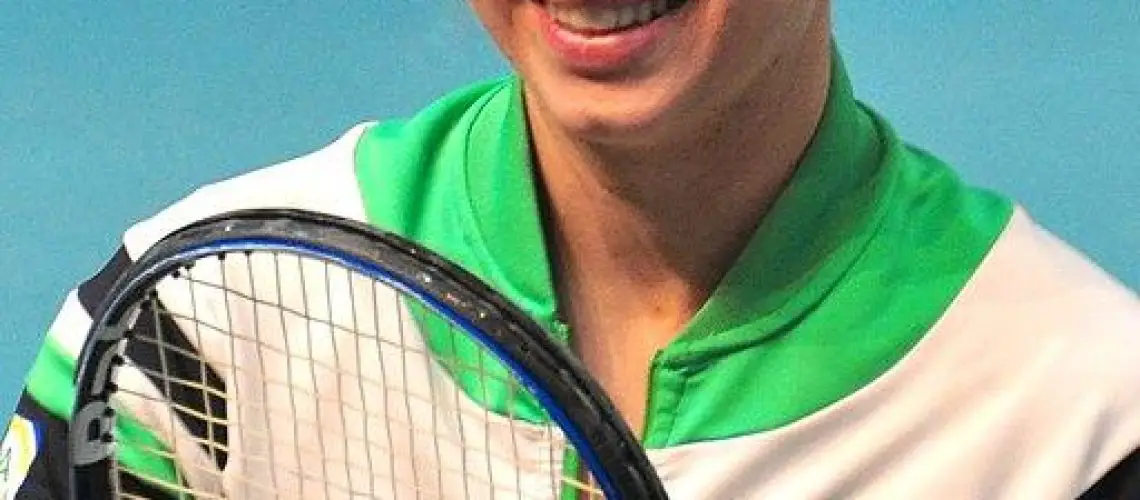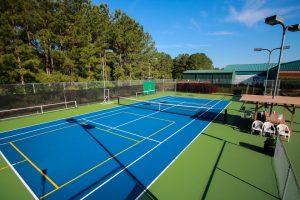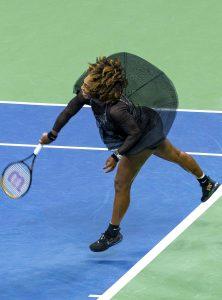We may earn money or products from the companies mentioned in this post.
Introduction

Sunscreen is a vital part of any professional tennis player’s routine, providing essential protection against harmful UV rays As these athletes spend countless hours under the scorching sun, safeguarding their skin becomes paramount Not only does sunscreen shield them from potential sunburns and discomfort, but it also helps prevent long-term skin damage that could impact their performance and overall health
Importance of Sunscreen for Professional Tennis Players
1 Protection from Harmful UV Rays:
The intense heat and prolonged exposure to the sun during tennis matches can lead to an increased risk of skin cancer Sunscreen acts as a barrier, effectively blocking harmful ultraviolet (UV) rays from penetrating the skin’s surface By creating this protective shield, players can minimize the potential damage caused by excessive sun exposure
2 Prevention of Sunburn and Skin Damage:
Tennis tournaments often take place in locations with high levels of sunlight, such as open-air stadiums or courts surrounded by minimal shade Without proper protection, players are susceptible to painful sunburns that can hinder their performance on the court Additionally, consistent exposure to UV rays can accelerate signs of aging and cause long-lasting skin damage
Factors Affecting the Choice of Sunscreen
1 Weather Conditions:
The choice of sunscreen may vary depending on the prevailing weather conditions during a tennis match or practice session On hot and sunny days, players should opt for broad-spectrum sunscreen with a higher SPF (sun protection factor) to ensure maximum coverage against both UVA and UVB rays However, in overcast or cooler weather, a lower SPF may be sufficient
2 Personal Skin Type and Sensitivity:
Every individual has unique skin characteristics, such as sensitivity and type (dry, oily, or combination). It is crucial for professional tennis players to consider these factors when selecting a sunscreen Those with sensitive skin should opt for hypoallergenic or mineral-based sunscreens, while individuals with oily skin may prefer lightweight, non-greasy formulas that won’t affect their grip on the racket
Types of Sunscreen used by Professional Tennis Players

When it comes to protecting their skin from the scorching rays of the sun, professional tennis players rely on specialized sunscreen formulas These sunscreens are carefully chosen to provide maximum protection without compromising performance on the court Let’s take a closer look at the two main types of sunscreens used by these athletes
Physical Sunscreens (Mineral-based)
One popular choice among professional tennis players is physical sunscreen, which is formulated with mineral-based ingredients like zinc oxide and titanium dioxide These ingredients create a protective barrier on the skin’s surface that reflects harmful UVA and UVB rays away from the body
Advantages:
Physical sunscreens offer broad-spectrum protection, guarding against both UVA and UVB radiation Additionally, they are less likely to cause irritation for those with sensitive skin due to their gentle nature Moreover, these sunscreens tend to have longer-lasting effectiveness on the skin surface, providing extended protection during long matches under intense sunlight
Disadvantages:
One drawback of physical sunscreens is that they can leave a white cast on the skin due to their opaque nature This can be more noticeable on individuals with darker complexions Additionally, because physical sunscreen sits on top of the skin instead of being absorbed, it may require more frequent reapplication after sweating or water exposure
Chemical Sunscreens (Organic-based)
The second type commonly seen in player’s bags is chemical sunscreen, which contains organic compounds like avobenzone, octinoxate, oxybenzone, among others Unlike physical sunscreens that create a barrier on the surface of the skin, chemical sunscreens work by absorbing UV rays and converting them into heat energy
Advantages:
Chemical sunscreens are favored by professional tennis players for their lightweight texture, making them easy to apply and blend into the skin They leave little to no visible residue on the skin surface, allowing players to focus on their game without any distractions
Disadvantages:
Although chemical sunscreens offer excellent protection, some individuals with sensitive skin may experience irritation or allergic reactions due to the chemical compounds present in these formulas It is important for athletes to choose a sunscreen that suits their specific needs and avoids any potential adverse effects
In conclusion, professional tennis players have a range of sunscreen options at their disposal Whether they opt for physical or chemical sunscreens, it ultimately comes down to personal preference and individual skin requirements Regardless of the choice made, the priority remains the same: protecting their skin from harmful UV rays while giving their all on the court
Best Practices in Sunscreen Application for Tennis Players

Tennis is a thrilling sport that requires players to spend long hours under the scorching sun While it may be tempting to focus solely on perfecting your serve and mastering your strokes, it’s crucial not to overlook the importance of sun protection Applying sunscreen should be an integral part of every tennis player’s routine, as it helps shield your skin from harmful ultraviolet (UV) rays By following these best practices, you can ensure maximum protection and enjoy the game without worrying about sun damage
Prioritizing SPF Value
The first step in effective sunscreen application is choosing a product with an appropriate Sun Protection Factor (SPF). While SPF 30+ is the minimum recommended level for most individuals, professional tennis players often opt for higher SPF values, such as 50+. These higher levels provide an extra layer of defense against UVB rays and help prevent sunburns
Water-Resistant Formulas & Sweat Resistance
In a fast-paced sport like tennis, sweating is inevitable To ensure long-lasting protection during matches, it’s crucial to select water-resistant sunscreen formulas that can withstand perspiration Look for products specifically labeled as sweat-resistant or water-resistant to maintain adequate coverage throughout intense gameplay
Proper Application Techniques
The way you apply sunscreen plays a significant role in its effectiveness Before stepping onto the court, make sure to apply your chosen sunscreen liberally and evenly over exposed areas of skin Experts recommend applying at least 15-20 minutes before exposure to allow proper absorption into the skin
- Reapplication every two hours: Sunscreen loses effectiveness over time due to exposure and natural wear-off Therefore, it’s essential to reapply every two hours during breaks in play to maintain continuous protection
- Immediate reapplication after heavy sweating: If you find yourself drenched in sweat, it’s essential to reapply sunscreen immediately Heavy sweating can dilute the product and reduce its effectiveness, leaving your skin vulnerable to UV damage
Additional Protective Measures
While sunscreen is a vital component of sun protection, it shouldn’t be your sole defense Consider incorporating additional protective measures into your tennis routine:
- Wearing hats with wide brims or visors: These accessories provide extra shade for your face and neck, protecting them from direct sunlight
- Investing in UV-blocking sunglasses: Your eyes are also at risk of sun damage Choose sunglasses that offer 100% UVA and UVB protection to safeguard your vision while on the court
By prioritizing SPF value, using water-resistant formulas, applying sunscreen correctly, and taking additional protective measures like wearing hats and sunglasses, you can enjoy playing tennis without compromising your skin’s health Stay safe under the sun and keep smashing those serves!
Popular Sunscreen Brands Among Tennis Professionals

Tennis professionals understand the importance of protecting their skin from the harsh rays of the sun With long hours spent on the court, they need reliable sunscreen brands that can withstand sweat and provide effective sun protection Let’s take a look at some popular sunscreen brands favored by tennis pros:
EltaMD – UV Clear Broad-Spectrum SPF 46
EltaMD is a well-known brand among tennis professionals due to its high-quality sunscreens Their UV Clear Broad-Spectrum SPF 46 offers broad-spectrum protection while being gentle on sensitive skin This lightweight formula absorbs quickly and leaves no residue, making it ideal for intense tennis matches
COOLA – Sport Classic Face Organic Sunscreen Lotion SPF 50
COOLA is another favorite brand among tennis players, known for its organic and eco-friendly sunscreens Their Sport Classic Face Organic Sunscreen Lotion with SPF 50 provides excellent protection against UVA and UVB rays It is water-resistant and packed with nourishing ingredients to keep the skin hydrated even during intense rallies
Neutrogena – Ultra Sheer Dry-Touch Sunscreen SPF 45
Neutrogena has been a trusted name in skincare for years, and their Ultra Sheer Dry-Touch Sunscreen with SPF 45 is a popular choice among tennis professionals The lightweight formula absorbs quickly into the skin without leaving a greasy feel, ensuring comfort during long matches under the scorching sun
SkinCeuticals – Physical Fusion UV Defense SPF 50
SkinCeuticals is renowned for its advanced skincare products, and their Physical Fusion UV Defense with SPF 50 is highly regarded by tennis players This sunscreen provides broad-spectrum protection and is formulated with transparent zinc oxide, giving a natural-looking finish on the skin
When it comes to choosing the right sunscreen for professional tennis players, personal preferences play a significant role Factors such as skin type, sensitivity, and specific outdoor conditions should be considered By understanding the differences in types of sunscreens and proper application techniques, tennis players can ensure they are well-protected from harmful UV rays while maintaining optimal performance on the court
Useful Links

Do pros often wear sunscreen? Rafa in particular has a ton …
Don’t Get Burned By Your Sunscreen
Sun Dangers and Protections for Tennis Players
Naomi Osaka Is Serving Up Her Own Sunscreen Line
5 Tips For Tennis Players to Protect Their Skin – NineBot-France
La Roche-Posay Becomes the First-Ever Official …
This Lightweight Sunscreen Stands Up to Sweat, Without …
Top 5 Sunscreens for Athletes
5 Sun Protection Tips for Tennis Players
‘I’m Obsessed With Sunscreen’- Ironic Turn of Events as …
The 4 Best Sunscreens of 2023 | Reviews by Wirecutter
The sun can be dangerous for tennis players
Best UV Products for Tennis Players: Here Comes the Sun!
Tennis Fans: Wear Sunscreen to Protect Skin | Resource
Emma Raducanu on Her Court-Tested Sunscreen and Off …
The Sun, Heat and Skin Cancer: Is Tennis Too Dangerous?
Tennis
5 Easy Sun Protection Tips for Tennis Players
How Naomi Osaka Practices Self-Care Before and After a …






